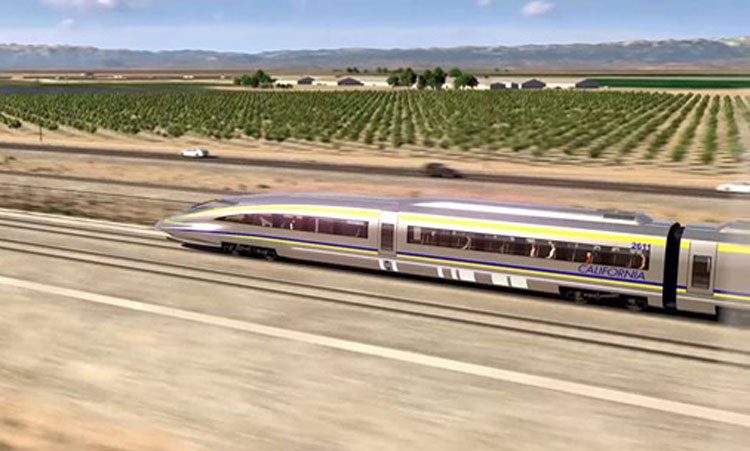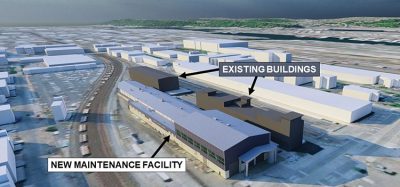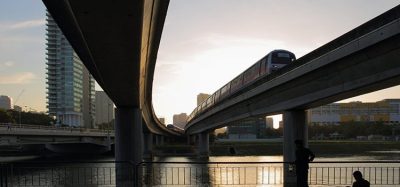California High-Speed Rail Authority Releases 2019 Sustainability Report
Posted: 24 September 2019 | Global Railway Review | No comments yet
The annual report covers the Authority’s sustainability activities from 1 January to 31 December 2018, and details the contributions of the California high-speed rail project toward the State of California’s social equity, environmental and economic development objectives.


Conceptual rendering of a typical high-speed rail segment in the Central Valley near Corcoran. Credit: hsr.ca.gov
The California High-Speed Rail Authority (Authority) has released its 2019 Sustainability Report: Energizing Economic Revitalization.
California’s high-speed rail project received five stars and is one of the top ranked sustainable rail infrastructure projects in North America, as evaluated by the GRESB Infrastructure Assessment – the leading benchmark for environmental, social and governance policies, practices, and performance of real estate and infrastructure investments around the world.
The Authority’s Chief Executive Officer, Brian Kelly, said: “As our 2019 Sustainability Report makes clear, the Authority is committed to sustainable mobility, sustainable economic growth, and sustainable construction and operation practices. From expanding job creation to cleaning the air, respecting natural resources and transforming communities to reduce sprawl, we demonstrate our commitment to sustainability every day in every way.”
The investments the Authority is making are vital for California’s goals addressing climate change and developing clean energy while transitioning to a low-carbon economy. The Authority is contributing funding to regional and local rail systems in Northern and Southern California to give people a reason to forgo their cars, including:
- In Northern California, contributing $713 million to the Caltrain Modernization Program and electrifying the Caltrain corridor between San Francisco and San Jose
- In Southern California, contributing $389 million to regional and commuter rail connectivity projects being implemented by Caltrans, the Los Angeles County Metropolitan Transportation Authority, the San Diego Association of Governments and the Southern California Regional Rail Authority, among others.
The 2019 report, which was developed in accordance with the Global Reporting Initiative (GRI) Standards Core Option – the world’s leading and most widely adopted sustainability reporting framework – lists several additional sustainability milestones from 2018, including:
- Working with the California Farmland Conservancy Program to secure 273 deeded acres of agricultural land for conservation
- Working in partnership with cities along the alignment, including San Jose, Los Angeles, Bakersfield, Millbrae and Fresno, on city building at stations
- Preserving and restoring more than 2,600 acres of natural habitat
- Awarding grant funding to the California Urban Forests Council, leading to 1,200 trees planted in the Central Valley and 750 trees being planted in Southern California cities including Glendale, South Los Angeles, Paramount and Norwalk to help offset greenhouse gas emission
- Avoiding nearly 70,000 pounds of criteria air pollutants during construction, keeping harmful pollutants out of the Valley
- Continuing the progress on recycling construction materials, keeping more than 21,000 tonnes of material out of landfills
- Through mid-2018, through the project’s investment, creating approximately $7.6 billion in total economic activity across the state.
GRESB Infrastructure Director, Rick Walters, said: “It is great to see California’s High-Speed Rail Authority continuing to report to GRESB to benchmark its performance against similar infrastructure projects and assets, and against the entire GRESB dataset annually. This ongoing commitment to sustainability is affirmed further this year by California’s project moving back up into the top quintile and therefore receiving a five-star rating. The Authority’s track record on sustainability, as measured by GRESB, will surely position the asset well when it comes to attracting private sector investment in the future.”
Mary D. Nichols, California Air Resources Board Chair, said: “California’s high-speed rail has been planned carefully, and it is now a model for sustainable infrastructure practices, from ensuring only clean construction equipment to requiring the use of renewable energy.”
Related topics
High-Speed Rail, Infrastructure Developments, Sustainability/Decarbonisation







